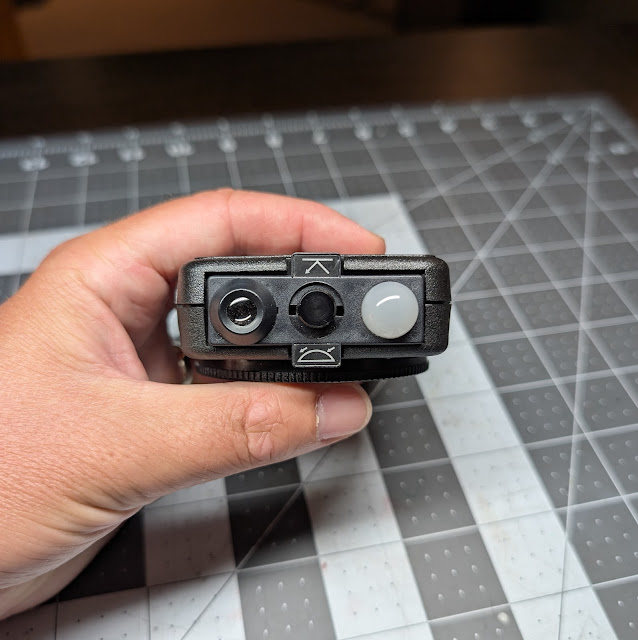 |
| Prepare the Ground. (Tri-X 400, Nikon F3). |
Miniature photography (and photography in general) has become substantially easier with the advent of advanced integrated light meters and digital displays that preview what the photo will look like when you press the shutter. These features, common on modern mirrorless and phone cameras (and DSLRs to an extent), make achieving a desired outcome more intuitive, since you can adjust settings and see the effects in real time. When taking miniature photos using film, however, things are more difficult. With film, you do not have the luxury of previewing the picture before taking it. Most film cameras have relatively simple integrated light meters that measure reflected light and estimate the necessary setting required to obtain what it thinks is a proper exposure (often trying to achieve 18% neutral gray). These, however, can be easily fooled when lighting conditions are not ideal, resulting in meter predictions that lead to over- or underexposed images, if you do not know how the meter works. For example, when using my Nikon F3 and Minolta SrT 201, their internal meters often overexpose images of miniatures, since the scenes I try to capture are dark and moody, but the integrated meter attempts to increase the exposure to achieve neutral gray. In the past few months, I have been using an external incident light meter to get around this issue.
 |
| I have been using a Calcu-Light-X Digital Exposure Meter, which can measure both reflective and incident light, for my miniature photography (thank you, @unsupervised_darkness, for gifting it to us!). |
 |
| The white, translucent dome on the light meter is a lumisphere used to detect incident light (rather than reflected light). |
 |
| The Church of the Red Athenæum - ILFORD Delta 100, Nikon F3 |
 |
| Hypatia Etranzi - ILFORD Delta 100, Nikon F3 |
 |
| Chaos Dwarf - Tri-X 400, Nikon F3 |
- Eric Wier



Another excellent insight into photography with a side of gorgeous mini photos. Love to see it!
ReplyDelete